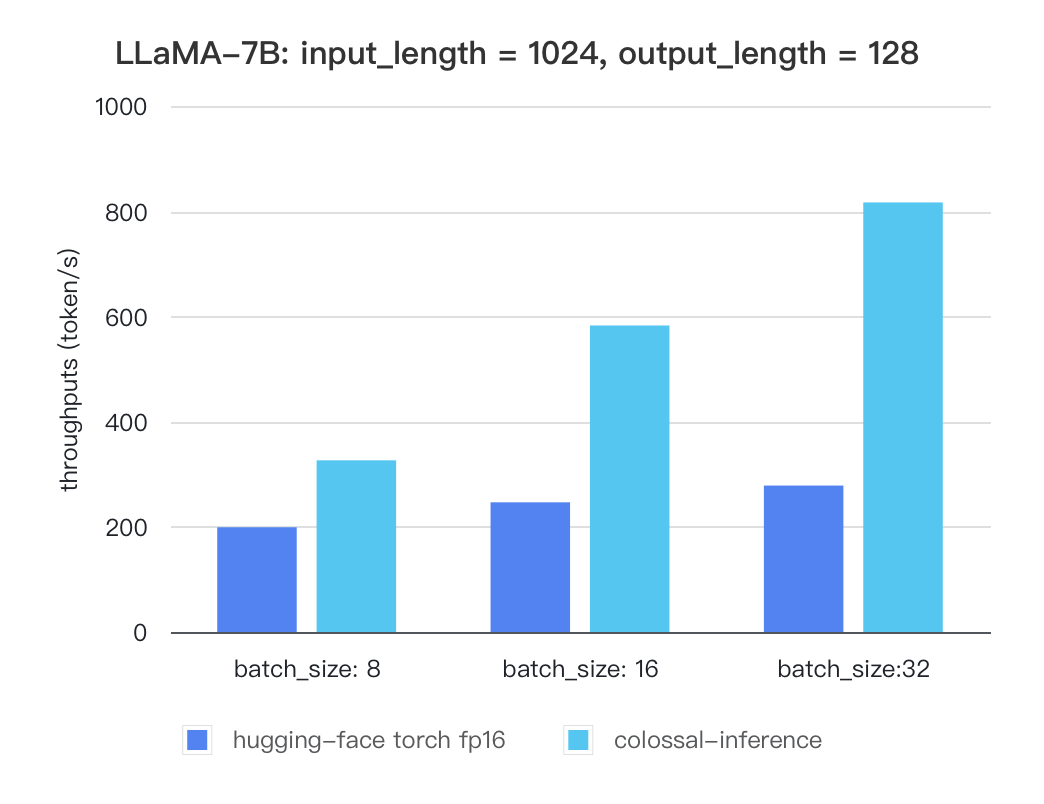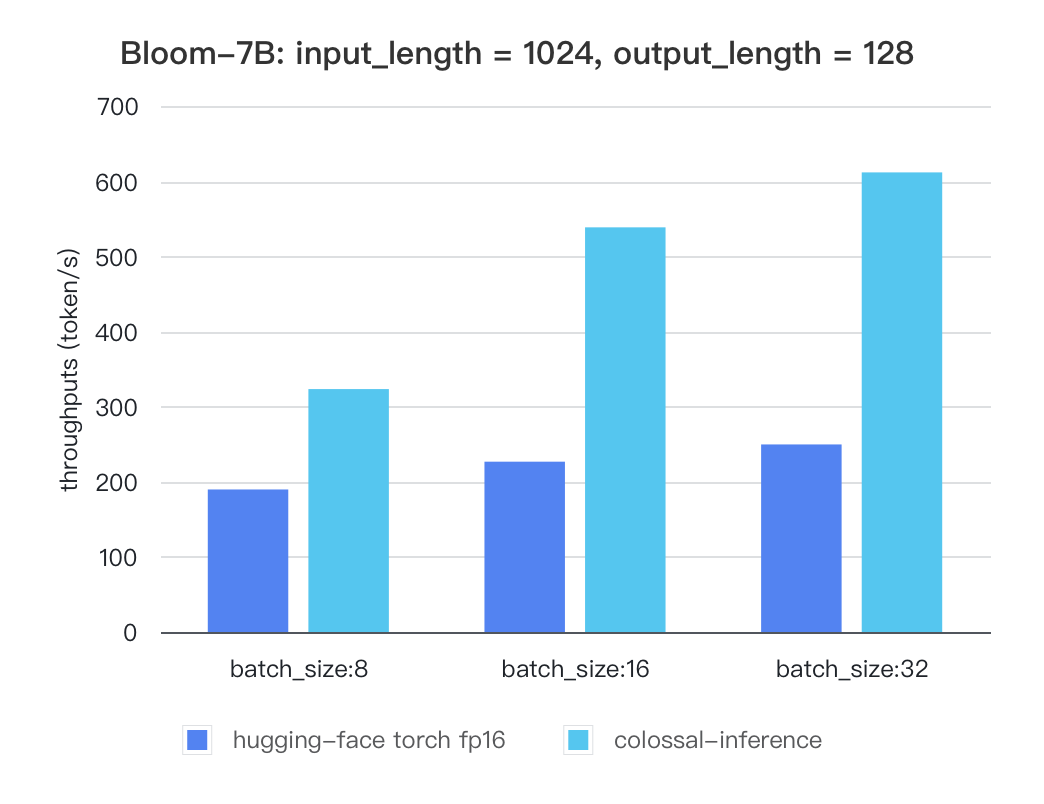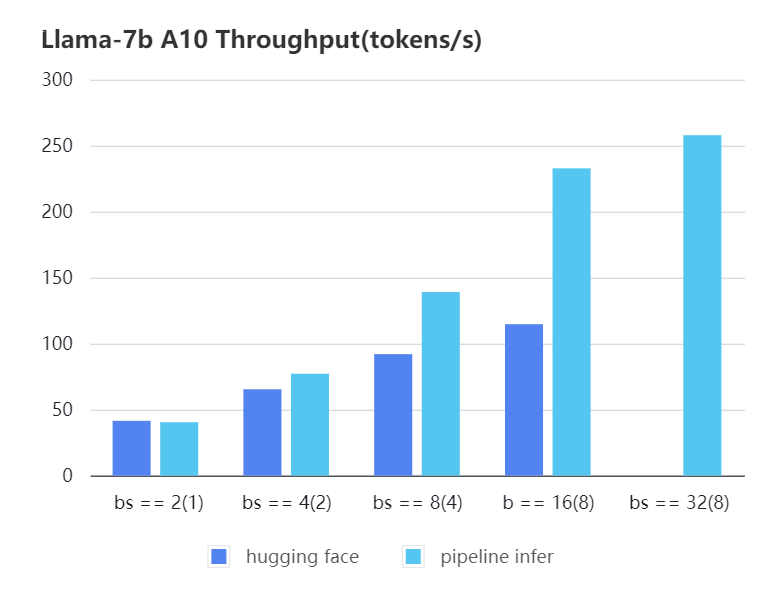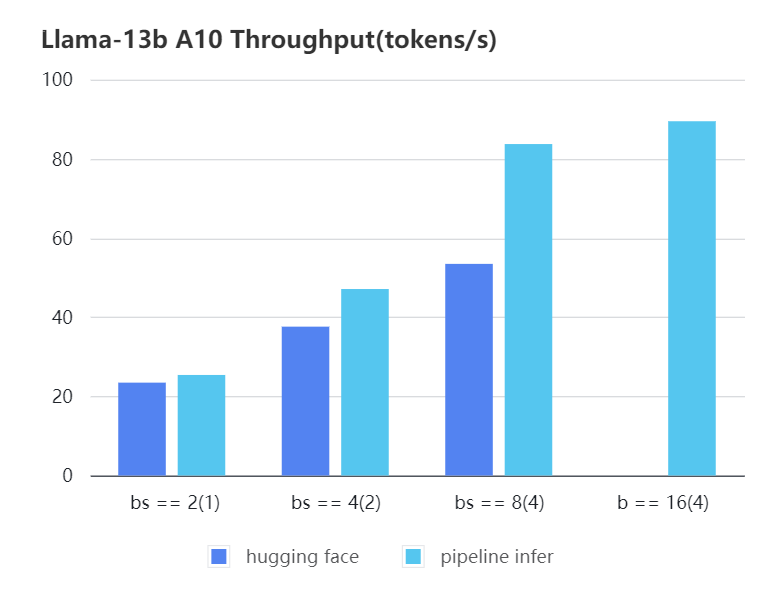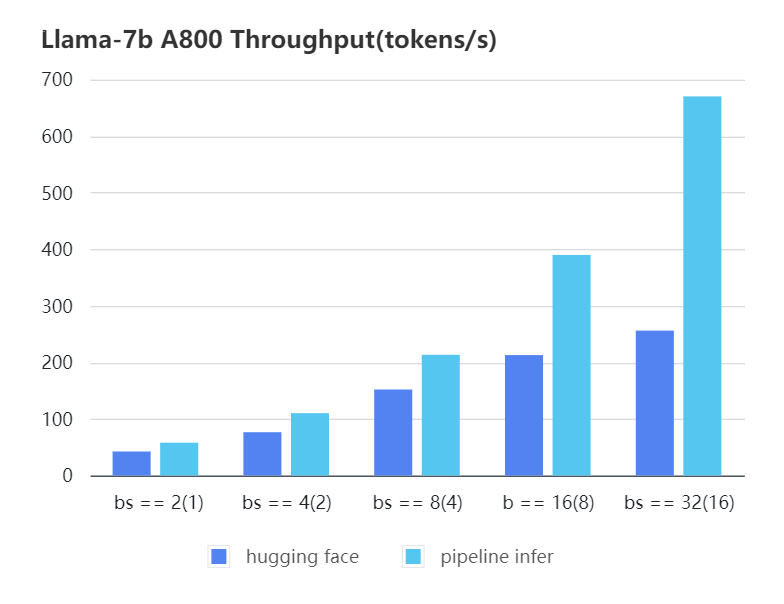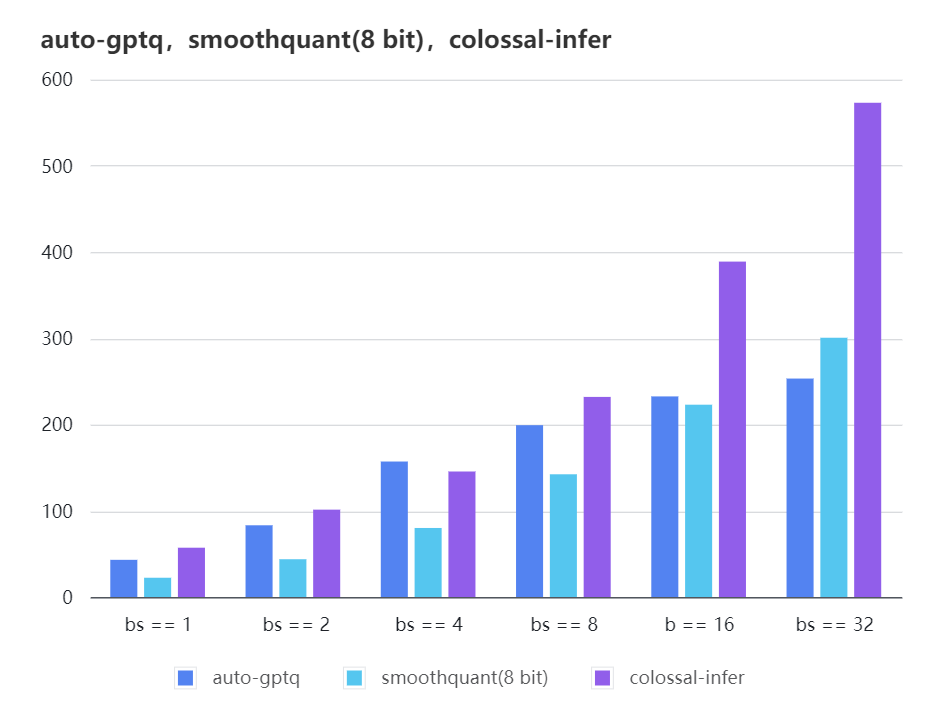|
|
1 year ago | |
|---|---|---|
| .. | ||
| engine | 1 year ago | |
| kv_cache | 1 year ago | |
| quant | 1 year ago | |
| README.md | 1 year ago | |
| __init__.py | 1 year ago | |
README.md
Colossal-Inference
Table of Contents
- 💡 Introduction
- 🔗 Design
- 🗺 Roadmap
- 📊 Performance
💡 Introduction
Colossal-Inference is the inference module of Colossal-AI, featuring high performance, steady and easy usability. Colossal-Inference incorporates the advantages of the latest open-source inference systems, including LightLLM, TGI, FasterTransformer and flash-attention. Additionally, it incorporates design principles from Colossal AI, especially Shardformer, aiming to provide an efficient and scalable solution for large model inference.
🔗 Design
Architecture of inference:
An overview of the Colossal-Inference is below:
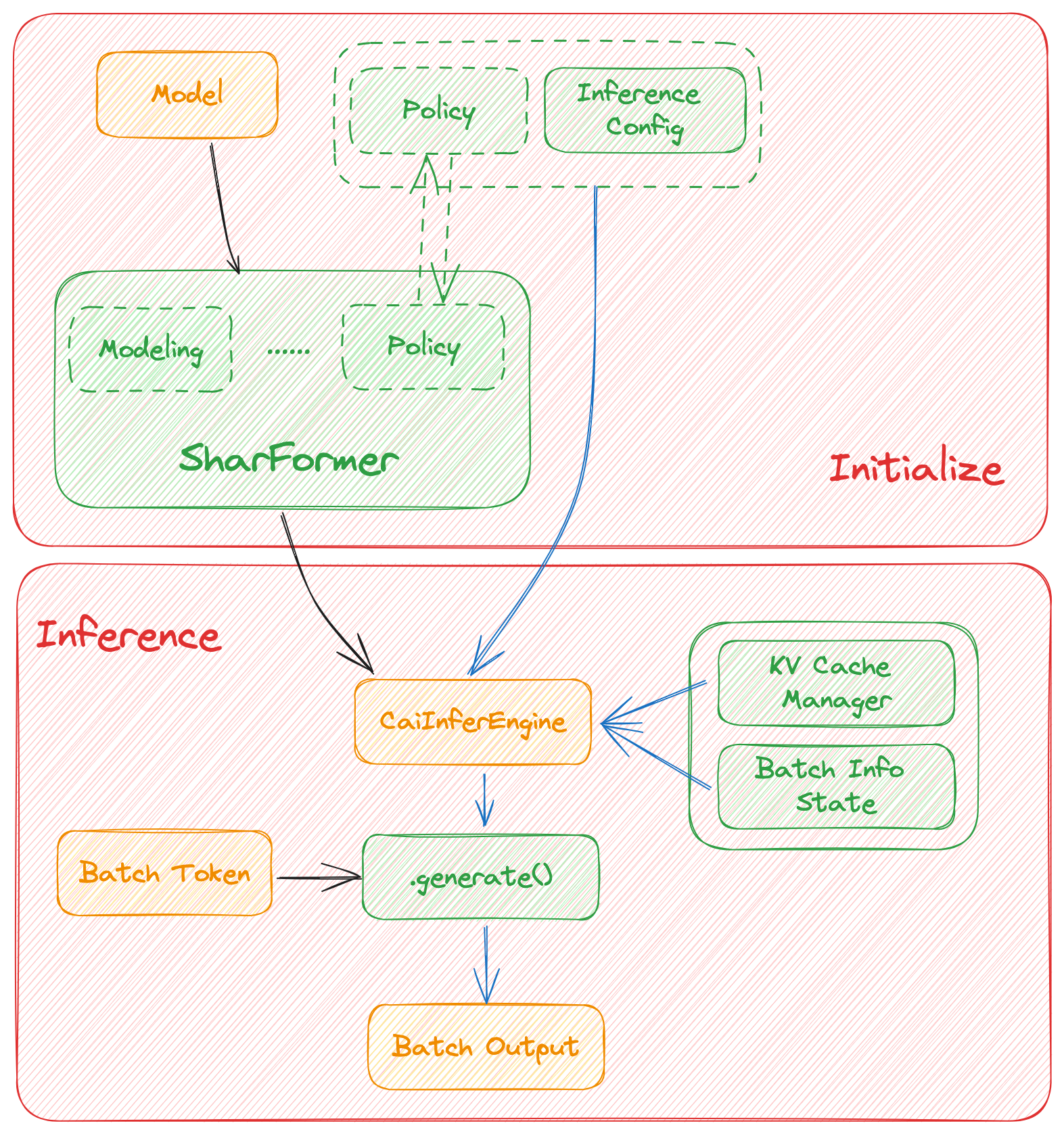
Components
Colossal-Inference is composed of three main components:
- High-level inference engine: it allows our inference framework to easily invoke and utilize various parallel methods.
HybridEngine: it is a high level interface that integrates with shardformer, especially for multi-card (tensor parallel, pipline parallel) inference
- Efficient memory management mechanism: Include the key-value cache manager, allowing for zero memory waste during inference.
cache manager: serves as a memory manager to help manage the key-value cache, it integrates functions such as memory allocation, indexing and release.batch_infer_info: holds all essential elements of a batch inference, which is updated every batch.
- High performance kernels and ops: which are inspired from existing libraries and modified correspondingly.
🗺 Roadmap
- Design cache manager and batch infer state
- Design TpInference engine to integrates with
Shardformer - Register corresponding high-performance
kernelandops - Design policies and forwards (e.g.
LlamaandBloom)- policy
- context forward
- token forward
- support flash-decoding
- Support all models
- Llama
- Llama-2
- Bloom
- Chatglm2
- Quantization
- GPTQ
- SmoothQuant
- Benchmarking for all models
📊 Performance
environment:
We conducted multiple benchmark tests to evaluate the performance. We compared the inference latency and throughputs between colossal-inference and original hugging-face torch fp16.
For various models, experiments were conducted using multiple batch sizes under the consistent model configuration of 7 billion(7b) parameters, 1024 input length, and 128 output length. The obtained results are as follows (due to time constraints, the evaluation has currently been performed solely on the A100 single GPU performance; multi-GPU performance will be addressed in the future):
Single GPU Performance:
Currently the stats below are calculated based on A100 (single GPU), and we calculate token latency based on average values of context-forward and decoding forward process, which means we combine both of processes to calculate token generation times. We are actively developing new features and methods to further optimize the performance of LLM models. Please stay tuned.
Tensor Parallelism Inference
Llama
| batch_size | 8 | 16 | 32 |
|---|---|---|---|
| hugging-face torch fp16 | 199.12 | 246.56 | 278.4 |
| colossal-inference | 326.4 | 582.72 | 816.64 |
Bloom
| batch_size | 8 | 16 | 32 |
|---|---|---|---|
| hugging-face torch fp16 | 189.68 | 226.66 | 249.61 |
| colossal-inference | 323.28 | 538.52 | 611.64 |
Pipline Parallelism Inference
We conducted multiple benchmark tests to evaluate the performance. We compared the inference latency and throughputs between Pipeline Inference and hugging face pipeline. The test environment is 2 * A10, 20G / 2 * A800, 80G. We set input length=1024, output length=128.
A10 7b, fp16
| batch_size(micro_batch size) | 2(1) | 4(2) | 8(4) | 16(8) | 32(8) | 32(16) |
|---|---|---|---|---|---|---|
| Pipeline Inference | 40.35 | 77.10 | 139.03 | 232.70 | 257.81 | OOM |
| Hugging Face | 41.43 | 65.30 | 91.93 | 114.62 | OOM | OOM |
A10 13b, fp16
| batch_size(micro_batch size) | 2(1) | 4(2) | 8(4) | 16(4) |
|---|---|---|---|---|
| Pipeline Inference | 25.39 | 47.09 | 83.7 | 89.46 |
| Hugging Face | 23.48 | 37.59 | 53.44 | OOM |
A800 7b, fp16
| batch_size(micro_batch size) | 2(1) | 4(2) | 8(4) | 16(8) | 32(16) |
|---|---|---|---|---|---|
| Pipeline Inference | 57.97 | 110.13 | 213.33 | 389.86 | 670.12 |
| Hugging Face | 42.44 | 76.5 | 151.97 | 212.88 | 256.13 |
Quantization LLama
| batch_size | 8 | 16 | 32 |
|---|---|---|---|
| auto-gptq | 199.20 | 232.56 | 253.26 |
| smooth-quant | 142.28 | 222.96 | 300.59 |
| colossal-gptq | 231.98 | 388.87 | 573.03 |
The results of more models are coming soon!
